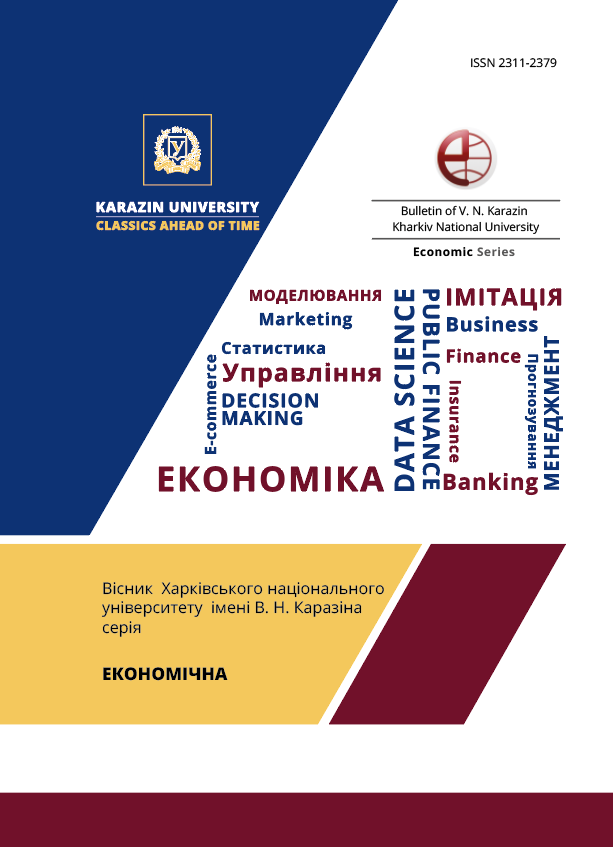Cluster analysis of tax indicators in Europien countries
Abstract
Global trends indicate that at the current stage of European countries’ integration, the processes of unification of taxation and tax administration, and the convergence and harmonization of tax systems are taking place. Therefore, for thorough studying of these phenomena, it is important to classify countries according to the parameters of fiscal systems and tax policy. Our analysis of the tax indicators of European countries on the main groups of taxes according to the methodology of ESA 2010 develops the research in this field. The analysis was carried out by clustering methods in order to identify common and different features in the tax systems of European countries. This study covers 30 European countries for the periods 2018 and 2020. This paper focuses on the analysis of three main indicators of tax revenues. According to the ESA 2010 methodology, these are taxes on production and imports (D.2), current taxes on income and property (D.5), and net social contributions (D.61). Cluster analysis of the tax-to-GDP ratio was performed using a hierarchical agglomerative method and the method of k-means using software R Studio and STATISTICA 7.0. As a result, 5 clusters have been obtained. They are characterized by the following average values: 1) the cluster with the lowest total tax-to-GDP ratio, where income taxes predominate; 2) the cluster with the highest total tax-to-GDP ratio, high tax ratio on income and property, and low social contributions; 3) the cluster with an average tax-to-GDP ratio and the largest social contributions; 4) the cluster with an average tax-to-GDP ratio and the predominance of taxes on production and import; 5) countries, where all analyzed tax groups have a roughly equal ratio to GDP. The classification carried out for 2020 data revealed some insignificant changes in the clusters’ composition. These changes can be considered as a result of the tax policy to counteract the effects of the pandemic.
Downloads
References
Becker, J., Fuest, C. (2010). EU regional policy and tax competition. European Economic Review, 54, 150-161.
Bekker, J., Elsayyad, M. (2009). The Evolution and Convergence of OECD Tax Systems. Intereconomics. Retrieved from http://www.intereconomics.eu/downloads/getfile.php?id=676.
Baldwin, R. E., Krugman, P. (2002). Agglomeration, integration and tax harmonization. European Economic Review, 48 (1), 1-23.
Delgado, F., Presno, M. (2010). Tax policy convergence in EU: an empirical analysis. Revista de Economía Mundial, 26, 53-83.
Delgado, F. J. (2013). Are Taxes Converging in Europe? Trends and Some Insights into the Effects of Economic Crisis. Journal of Global Economics,1(1), 24-26.
Tofan, I. (2012). Taxation issues in the EU countries. Agrarian economy, 1-2 (5), 78-82. (in Ukrainian)
Petik, M.I., Savarin, L.A. (2013). Perspectives of modernization of the tax system of Ukraine in the context of European integration. Scientific Bulletin of NLTU of Ukraine, 271-278. (in Ukrainian)
Bila, L.M. (2015). Common and distinctive features of the tax systems of the countries of the European Union and Ukraine. Nikolaev National University named after V.O. Sukhomlinsky. Retrieved from http://global-national.in.ua/archive/6-2015/135.pdf. (in Ukrainian)
Samusevich, Ya.V. (2015). Fiscal convergence as a consequence of tax competition: theoretical foundations and empirical analysis. Bulletin of the Ukrainian Academy of Banking,1 (38), 39-49. (in Ukrainian)
Dadashova, P.A. (2015). Developing a model of assessment of the impact of tax burden on the state of the budget of European countries. NaUKMA Scientific Notes. Economic sciences, 172, 25-29. (in Ukrainian)
Telnova, A.V. (2017). Analysis of corporate taxation and income tax on individuals in Europe. Problems of Ekononiki, 2, 48-54. (in Russian)
Mihokova, L., Andrejovska, A., & Martinkova, S. (2016). Categorization of corporate taxation in the European Union countries using cluster analysis: a comparative study. Economic Annals-XXI, 160(7-8), 4-8. doi: https://doi.org/10.21003/ea.V160-01.
Simkova, N. (2015). The Hierarchical Clustering of Tax Burden in the EU27. Journal of Competitiveness, 7(3), 95-109.
Korecko, J., Bacik, R. & Voznakova, I. (2019). Public Administration in EU: Harmonization of Income Taxes. Marketing and Management of Innovations, 4, 280-291. DOI: https://doi.org/10.21272/mmi.2019.4-22.
Statistics Explained: Tax Revenue statistics. Eurostat. 2020. Retrieved from https://ec.europa.eu/eurostat/statistics-explained/index.php?title=Tax_revenue_statistics
#Net_social_contributions_as_.25_of_GDP_increased_in_2020.2C_while_direct_taxes_decreased
Eurostat. 2020. Database. Retrieved from https://ec.europa.eu/eurostat/data/database.
Tryon, R. C. (1939). Cluster analysis. London: Ann Arbor Edwards Bros.
Duran, B. S., Odell, P. L. (1974). Cluster analysis: A survey. Berlin: Springer-Verlag.
Mandel, I. D. (1988). Cluster analysis. M.: Finance and Statistics, 1988. (in Russian)
Nikolaeva, O.G., Korsakova, K.S. (2019). A multifactorial regression model for forecasting the dynamics of VAT. Analytical Center "New Economy", 104-106. (in Ukrainian)
Taxation Trends in the European Union (2021). Directorate-General for Taxation and Customs Union, European Commission, Publications Office of the European Union, Luxembourg.

